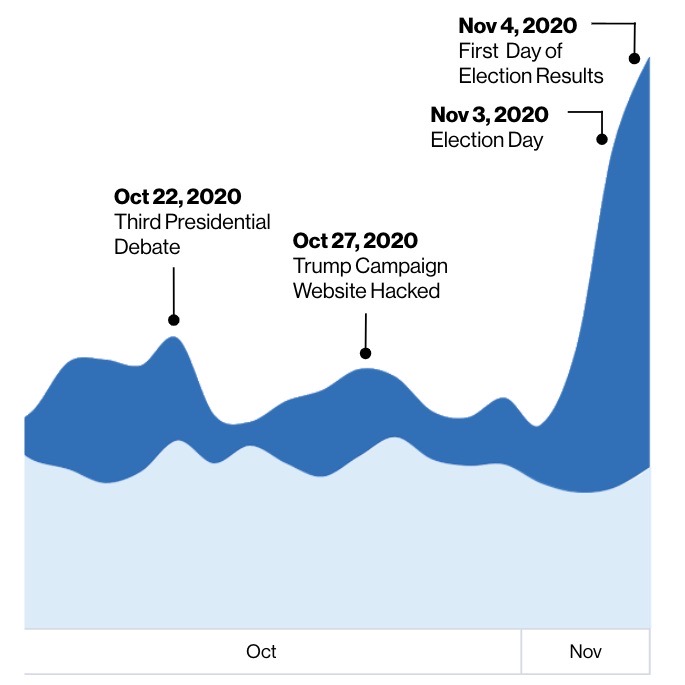The holiday season in the U.S. between Thanksgiving and Christmas is a critical sales period for smartphone manufacturers. From 2016 to 2018, the last three years Apple disclosed unit sales, the company sold well over one-third of its iPhones during the last quarter of each year. And while the stakes are just as high this year, the pandemic has strongly impacted the economy.
Flurry Blog

Apple is changing the information required to submit new apps and app updates to the app store effective December 8, 2020. The new submission process will give users transparency about app data usage via a new privacy details section of an app’s product page in the app store. This “nutrition label” will also include data used by third-party partners integrated into an app.


2020 has been a tumultuous year. A global pandemic claimed the lives of nearly 1.5 million people, a worldwide movement emerged for racial justice, and American political division created widespread concern. With COVID-19 forcing unprecedented social distancing, the mobile app economy has also experienced radical shifts. App consumption has exploded, Gen Z is gaming more than ever, and mobile news consumption dwarfed that of 2019. And Apple’s announcements of impending data policy rule changes have upended an ecosystem.

On October 13, 2020, in a highly anticipated launch event, Apple introduced its newest iPhone models, the iPhone 12 series. For the first time ever, Apple launched four devices that differ by size, price and features, including the first ever iPhone 12 mini at 5.4 inches. The devices launched in two waves: the 6.1-inch iPhone 12 and iPhone 12 Pro on October 23, and the iPhone 12 mini and 6.7-inch iPhone 12 Pro Max on November 13.

Earlier this month, more than one billion people in India as well as expatriates across the world celebrated the festival of Diwali. Best known as the Festival of Lights, Diwali is marked by family gatherings, fireworks and prayer, and is one of the most widely celebrated festivals in India. Over the years, the weeks leading up to Diwali have become the most important holiday shopping season in the country with people splurging on gadgets, clothes, appliances, jewelry, and more.

Our primary goal at Flurry is to help app developers build better apps for mobile users around the world. And we know firsthand how crashes and errors can negatively impact the user experience. To help our customers manage and respond to crashes, errors, and exceptions, we are pleased to announce a set of upgrades to our current Flurry Crash offering for iOS and Android apps.


With 8.5% of the world’s population, Southeast Asia is a culturally and ethnically diverse region and one of the fastest growing smartphone markets in the world. It’s made up of several countries, anchored by Indonesia, the world’s fourth most populated country. In this report, we’ll analyze the current smartphone landscape in Southeast Asia.
Over 1 billion tablets are in use globally, according to Statista, with a penetration rate forecasted to surpass 20% of the world’s population within a couple of years. While smartphones and laptops each have higher penetration rates, the tablet still holds a unique position in the market as an in-between form factor. In particular, it’s known for media consumption, gaming and productivity usage such as email and document editing.

Brazil is the world’s 6th most populated country and 4th largest smartphone market, only behind China, India and the United States. As South America's largest country, Brazil’s population accounts for half of the continent.

Apple and Samsung together account for more than half of the world’s active smartphone install base, and are clearly the leaders of the OEM smartphone market. But if we take a closer look at how they each earn their market share, there are remarkable differences. This Flurry report takes a closer look at Apple versus Samsung market share, the number of products each company has in the market, top devices in the top 20 countries, and more.
Pagination
- Previous page
- Page 3
- Next page
